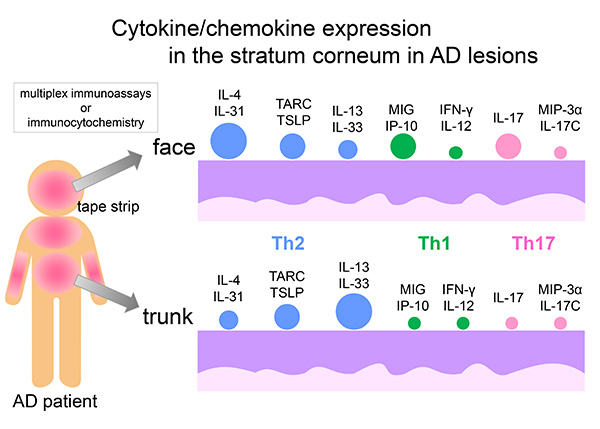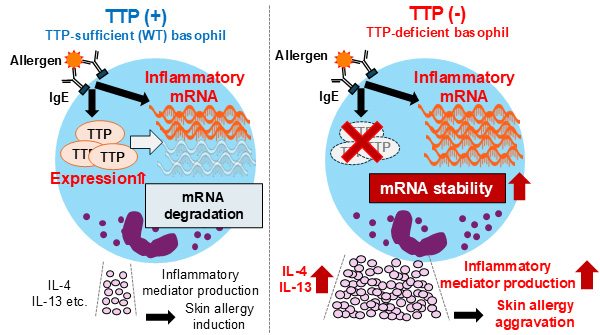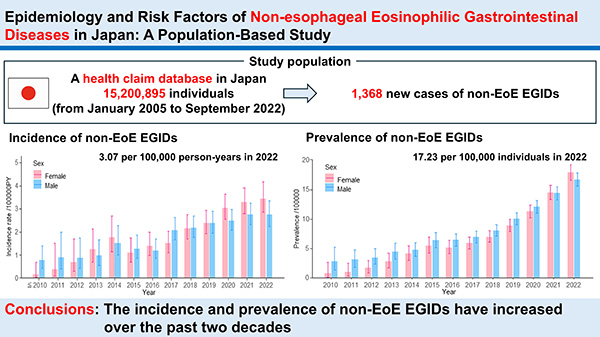Volume 74, Issue 2 (April 2025)
Editor's Choice
Editor’s comment: Dupilumab, an anti-IL-4 receptor alfa antibody, is highly effective against the symptoms of atopic dermatitis (AD). However, in some patients with AD, facial dermatitis takes longer to improve. Kido-Nakahara et al. determined whether cytokine/chemokine profiles differed between facial and other skin lesions in AD. The authors collected stratum corneum samples by tape stripping from lesions of the forehead and abdomen of AD patients and the control subjects. Then expression profiles of various cytokine/chemokines were measured by a multiplex assay and immunohistochemistry. The authors found dissimilar cytokine/chemokine profiles in the stratum corneum in the facial and abdominal lesions of AD, which may explain the different responsiveness of these lesions to dupilumab in AD.
Editor’s comment: Basophils, rare granulocytes, play an important role in the development of type 2 immune response and are involved in the pathophysiology of asthma, atopic dermatitis, and other allergic diseases. Thus, targeting of basophil activation can be expected to be beneficial in controlling allergic diseases. Ito et al. revealed a novel regulatory mechanism of basophil activation. The authors showed that tristetraprolin (TTP), an RNA-binding protein, controlled activation of basophils through the degradation of mRNAs encoding pro-inflammatory molecules. Their findings may have broad implications for the development of novel therapeutic strategies targeting basophils.
Editor’s comment: Non-esophageal eosinophilic gastrointestinal diseases (non-EoE EGIDs) are allergic conditions where type 2 immune response causes symptoms related to gastrointestinal tract dysfunction. Due to its rarity, the epidemiology of non-EoE EGIDs has not been as thoroughly studied as that of eosinophilic esophagitis. Sawada et al. report the first study based on the general population in Japan to examine the incidence of non-EoE EGIDs and identify its risk factors. The authors found a marked increase in the incidence and prevalence of non-EoE EGIDs in Japan over the past two decades.





